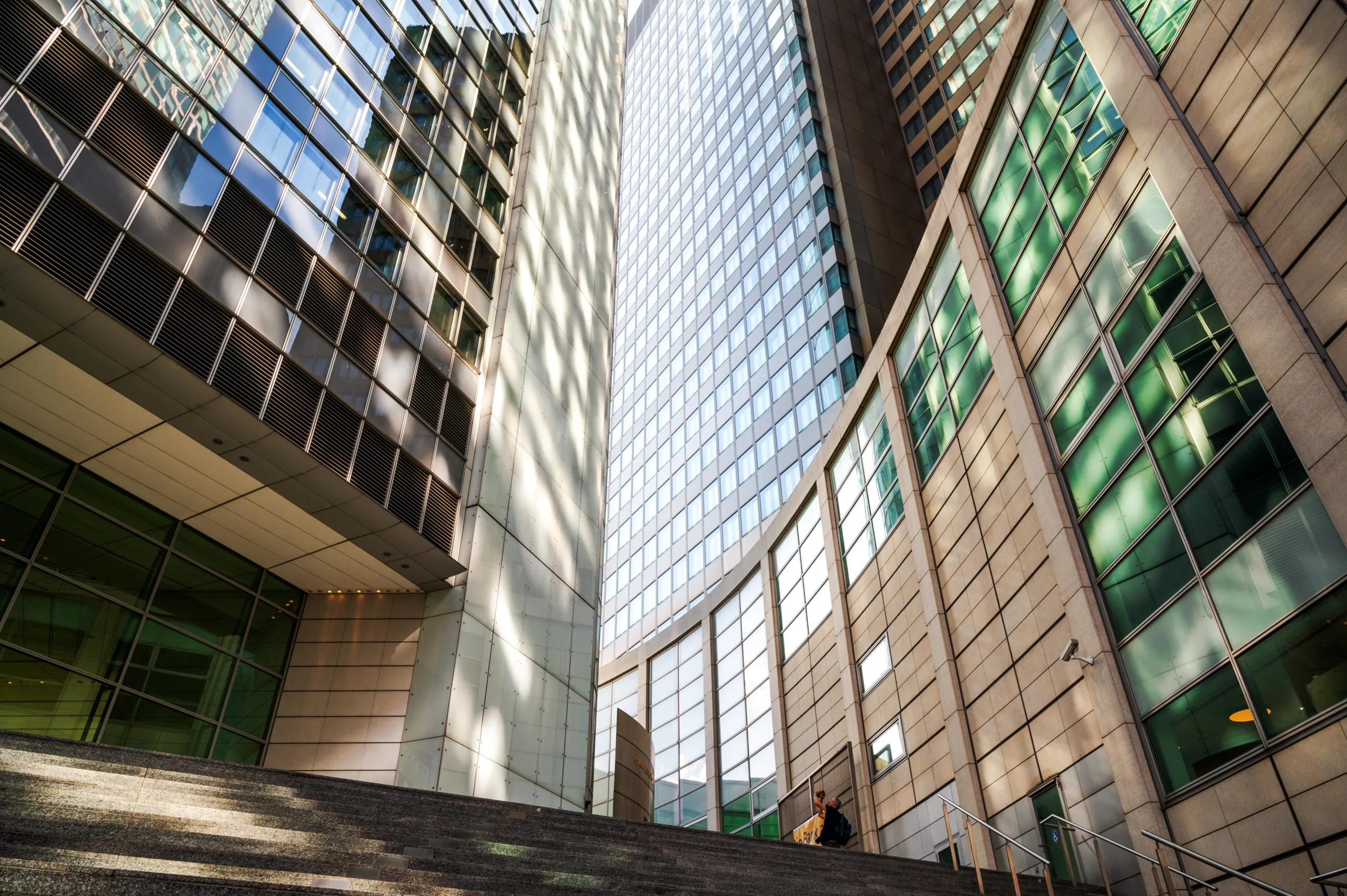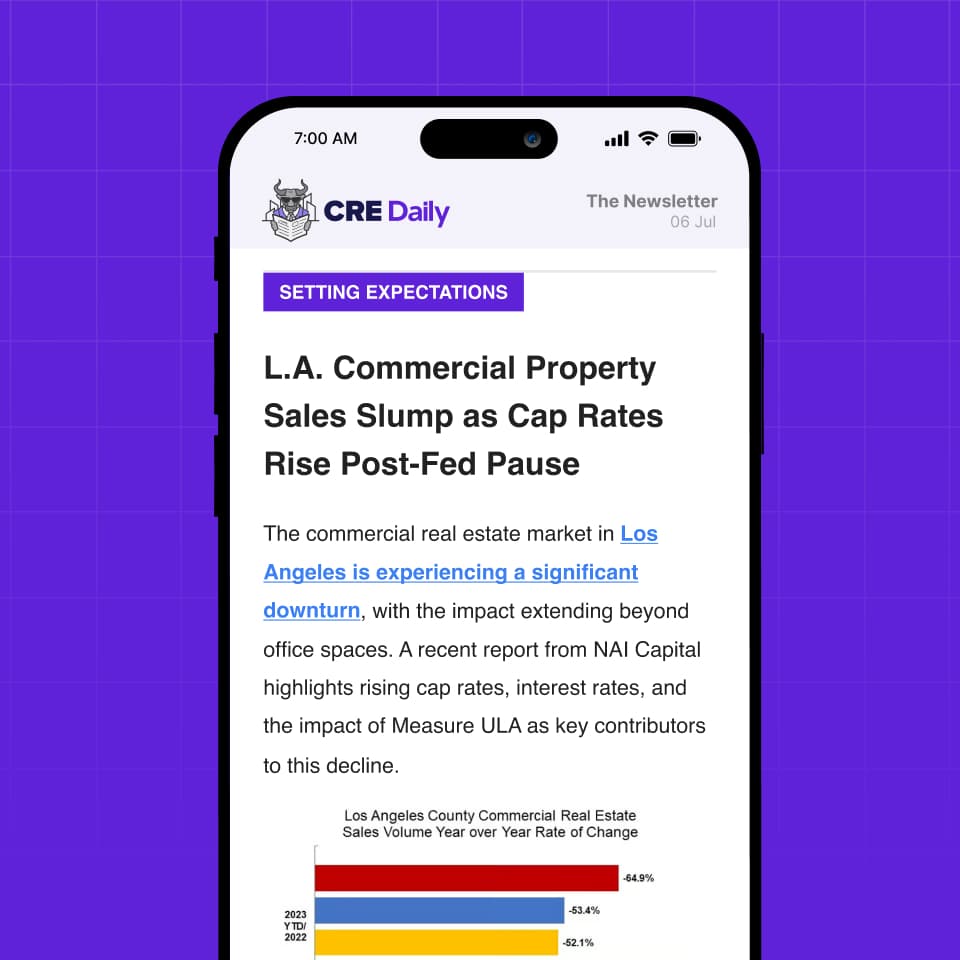Private and Public Real Estate Funds Show Diverging Sector Allocations
New data shows how listed REITs and private funds are taking different sector bets.
Good morning. The divide between private and listed real estate is growing, with one side doubling down on office and industrial while the other diversifies into new territory.
Today’s issue is brought to you by 3V Infrastructure—no-cost EV charging that drives retention and NOI.
🎙️This week on No Cap: Rick Schaupp of Clarion Partners joins the show to reveal how he went from designing buildings to steering billions, breaking down where he sees real estate opportunity, what actually looks cheap, and how to call the cycle before everyone else.
Market Snapshot
|
|
||||
|
|
*Data as of 09/19/2025 market close.
Sector Divide
Private and Public Real Estate Funds Show Diverging Sector Allocations
Private and public real estate are playing different games when it comes to sector focus—and the gap is only widening.
A tale of two strategies: An analysis of the FTSE Nareit All Equity REITs Index, active REIT funds, and the private ODCE fund shows diverging sector strategies. As of Q225, ODCE remains heavily concentrated in the four traditional sectors—apartments, office, retail, and industrial—with a 90% allocation, compared to just 39% for the REIT index and 31% for active REIT managers.
Traditional sectors, divergent paths: All three segments have cut traditional sector exposure over the past decade, but private real estate remains more conservative. ODCE still leans heavily on office (17%) and industrial (35%), while public REITs and active managers tilt toward non-traditional sectors, holding just 7% in apartments and 11% in retail.
-
Office: ODCE cut office allocations from 40% in 2015 to 17% in 2025. REITs slashed even further, with active managers dropping over 80% and the index down 70%.
-
Apartments: ODCE's allocation rose slightly, but public REITs dropped sharply post-pandemic. Active managers halved their apartment exposure since 2015.
-
Industrial: A standout across the board. ODCE nearly tripled its allocation, while active managers and the index saw growth through 2023, then tapered in 2025.
-
Retail: ODCE deprioritized retail (now 10%), while it's the largest sector for the REIT index (15%) and second largest for active managers (11%).

Rise of the non-traditional: Active REIT managers and the index have leaned into diversification, upping allocations to sectors like data centers, towers, and specialty properties. Since 2015, ODCE grew its non-traditional allocation from 5% to just 10%, while the index jumped from 48% to 61%, and active managers soared from 33% to 69%.
➥ THE TAKEAWAY
Different playbooks: Private real estate is sticking to the familiar, while listed REITs and their managers are leaning into diversification and agility. For investors, this divergence signals more than strategy. It reflects fundamentally different views on risk, liquidity, and long-term growth potential across real estate sectors.
TOGETHER WITH 3V INFRASTRUCTURE
EV Charging Without the Cost or Hassle
Did you know nearly 1 in 3 residents are interested in or won't rent without EV charging?
EV sales were their highest ever in August. As adoption increases, properties without charging are missing out on new residents and lease renewals today.
Are your properties ready?
3V Infrastructure can help with no-cost, no-hassle EV charging for multifamily portfolios.
*This is a paid advertisement. Please see the full disclosure at the bottom of the newsletter.
✍️ Editor’s Picks
-
Multifamily BTR: Driven by rising housing costs and shifting renter preferences, the BTR market sees continued growth—offering investors a passive opportunity to diversify. (sponsored)
-
Rate relief: Lower interest rates are sparking optimism across CRE, with analysts predicting a rebound in sales, lending, and refinancing activity.
-
Brokerage behemoth: Compass is acquiring rival Anywhere Real Estate for $1.6B in an all-stock deal, creating a residential real estate powerhouse.
-
Seeking spread: As the Fed begins cutting rates, CRE is seeing renewed investor appetite and signs of cap rate compression, marking a potential turning point after months of frozen deal activity.
-
Red flags: Commercial mortgage delinquencies rose across all lender types in Q2, with CMBS loans leading the spike as multifamily and office stress continues to mount.
-
Tracks of transformation: Tampa’s heritage streetcar line now links a wave of transformative mixed-use developments that blend the city’s historic roots with its fast-growing future.
-
Rent reset: Single-family rent growth slowed to just 2.3% YoY in July, falling below pre-pandemic norms for the first time in over a decade.
🏘️ MULTIFAMILY
-
Permit pullback: Single-family home construction has slowed to multi-year lows, while multifamily activity is easing but still holding stronger by comparison.
-
C-PACE record: North Development secured South Florida’s largest-ever C-PACE loan—$180M—for its Brickell condo tower.
-
Sky's the limit: Boston's planning agency approved a controversial rezoning plan allowing residential towers up to 700 feet downtown, aiming to revive the city core.
-
Capital comeback: Debt is flowing back into the seniors housing sector as investor interest rebounds and financing conditions improve.
-
Fee freedom: NYC’s FARE Act is reshaping the rental market by eliminating broker fees—giving tenants more mobility, increasing supply, and spurring faster lease activity across market-rate units.
🏭 Industrial
-
Rising hubs: Ten emerging U.S. industrial markets are drawing investment with strong infrastructure and demand, even as local risks remain.
-
AI infrastructure: AI-focused “neocloud” providers like CoreWeave are booming with fast, low-cost GPU services, but short contracts and shaky business models pose big risks for data center landlords and investors.
-
Pension play: Ontario Teachers’ and Sagard Real Estate made their first U.S. industrial buy with a 163K-SF Houston logistics property.
🏬 RETAIL
-
Demand driver: Open-air, necessity-driven shopping centers are emerging as a bright spot in private real estate, with strong demand, limited supply, and tenant upgrades pushing rents higher.
-
Downtown buzz: Lower Manhattan retail is shifting toward fitness, food, art, and entertainment, transforming the area into a round-the-clock destination.
-
Brady brand: Tom Brady’s CardVault is opening a 3K SF flagship store in SoHo, marking the sports card retailer’s first NYC location.
-
Claire's comeback: Ames Watson acquired Claire’s for $140M out of bankruptcy, aiming to revitalize the teen accessories brand with updated stores, elevated piercing services, and a leaner footprint.
-
Depot deal: Private equity firm Atlas Holdings is taking ODP Corp., owner of Office Depot, private in a $1B deal at $28/share.
🏢 OFFICE
-
Conversion craze: With D.C.’s apartment market holding strong and new ground-up projects stalled, lenders are fiercely competing to fund office-to-resi conversions across the region.
-
Return resistance: Big employers are tightening return-to-office rules, but attendance has barely risen as workers resist, managers look the other way, and compliance drops sharply once mandates hit three or more days.
-
Federal footprint: The federal government is racing to secure 300 new office spaces nationwide to support a massive hiring surge at ICE.
-
Talent magnet: Cambridge, Mass. ranks as the Northeast’s top innovation hub, outpacing regional peers with elite STEM talent, leading R&D infrastructure.
🏨 HOSPITALITY
-
Budget blowout: After an eight-year, $6B overhaul, the Waldorf Astoria reopens next month with China footing the bill and doubts over its payoff.
-
Downtown rebound: Silver Creek Development acquired the former Wagner Hotel in Battery Park City for $110M out of Chapter 11, paving the way for its return as a luxury property.
-
Olympic gamble: LA approved a $3B expansion of its convention center, aiming to finish Phase 1 by the 2028 Olympics.
📈 CHART OF THE DAY

Nonfarm payrolls were repeatedly overstated and later revised sharply downward, revealing a much weaker labor market than initially reported during recent years of recession risk.

You currently have 0 referrals, only 1 away from receiving Multifamily Stress Test Model.
What did you think of today's newsletter? |






















